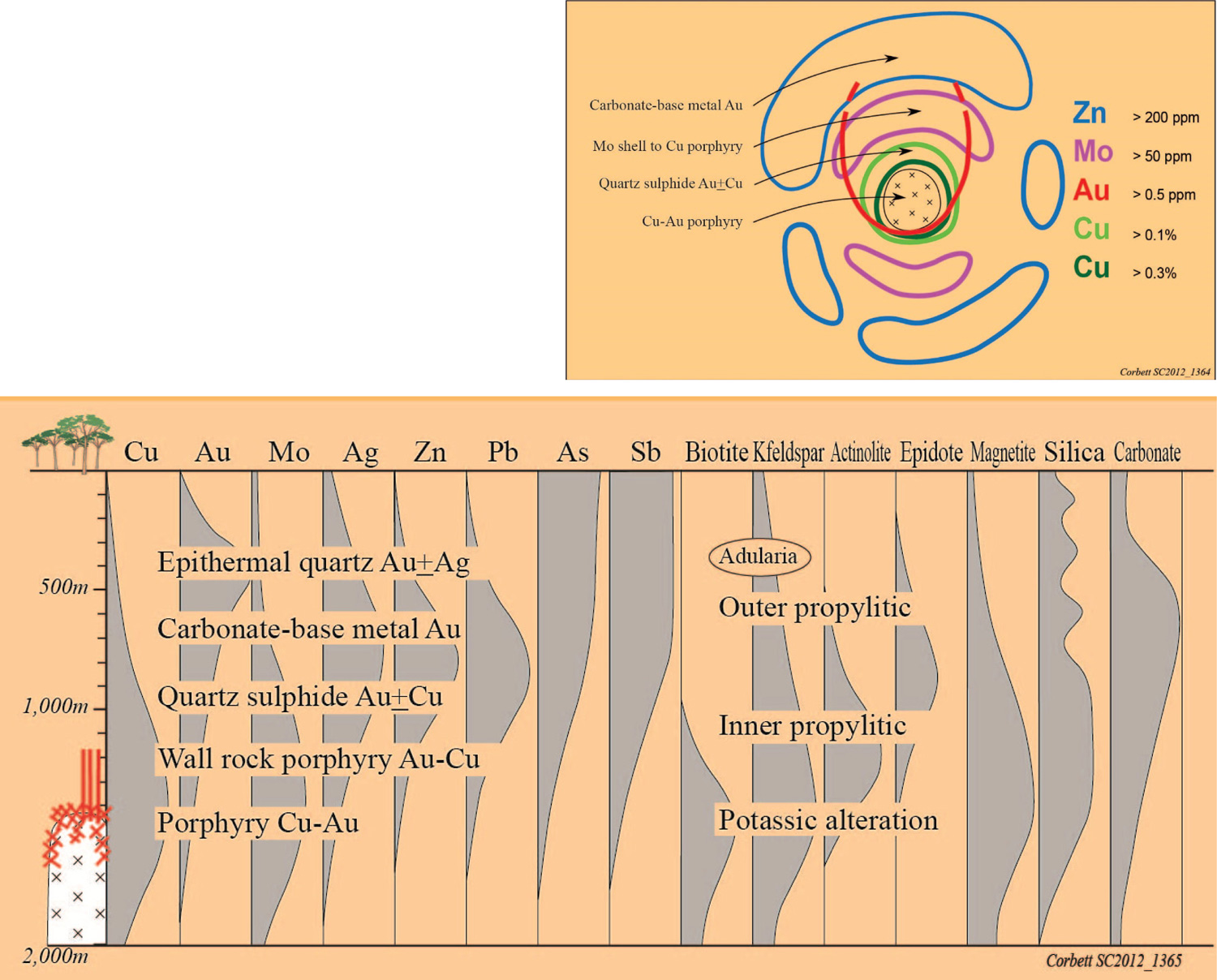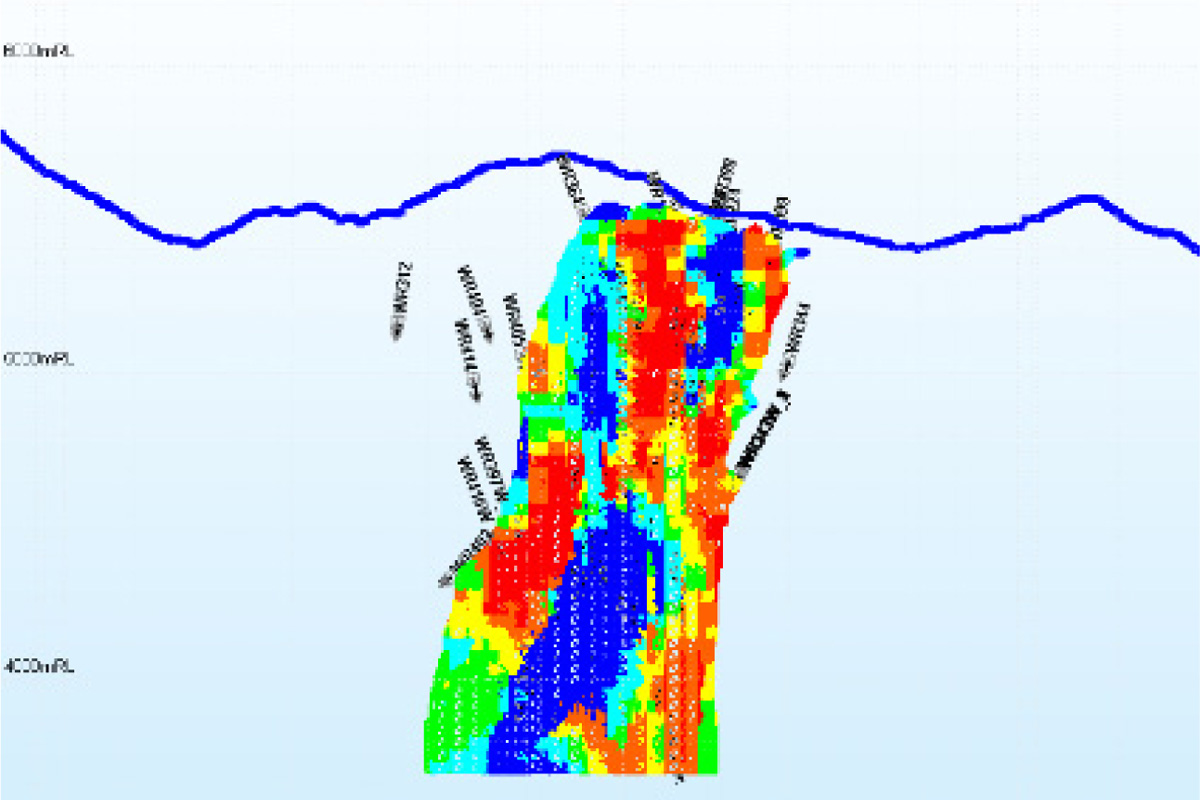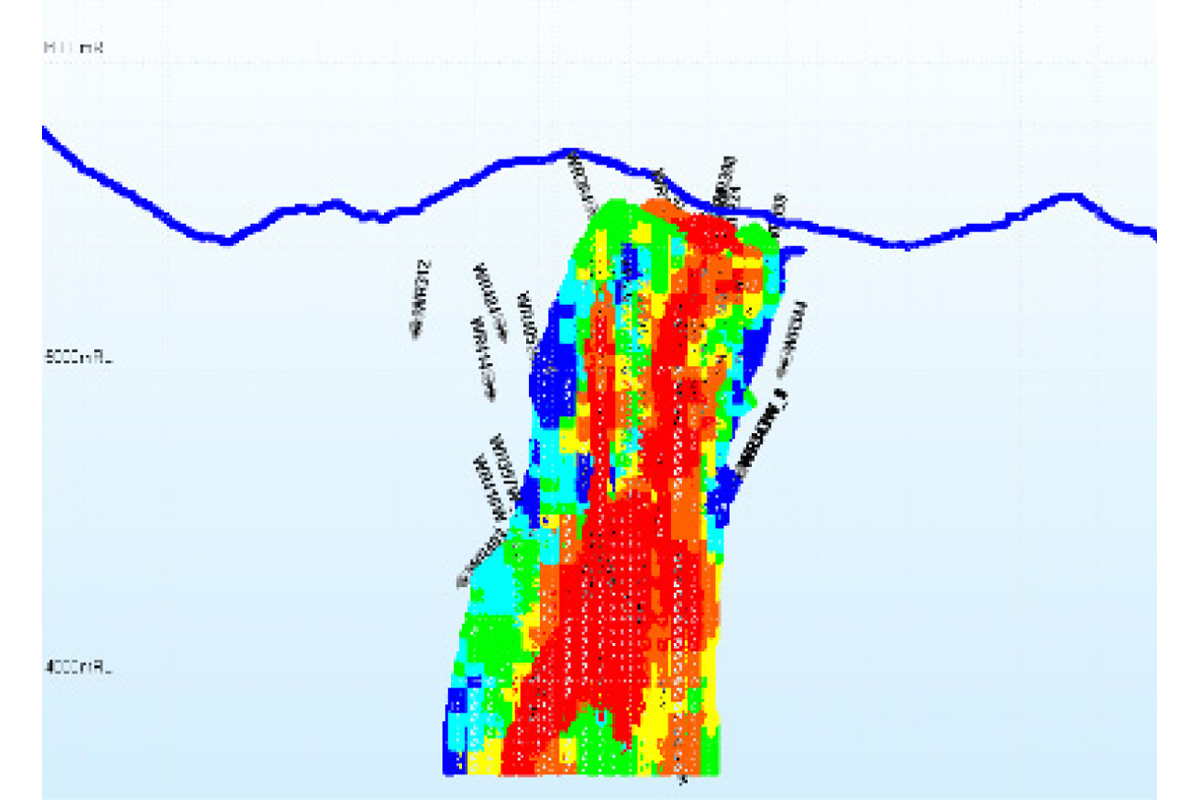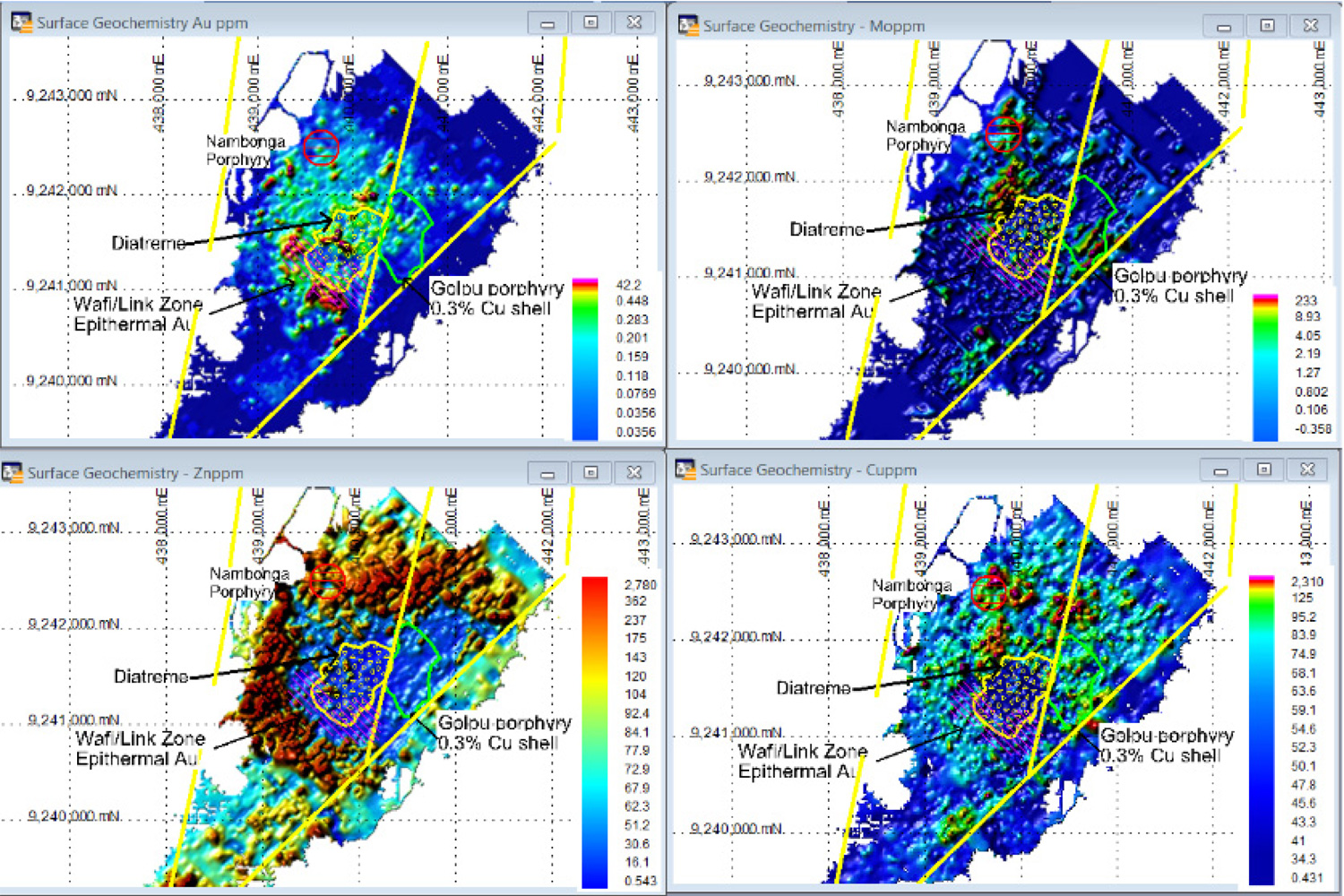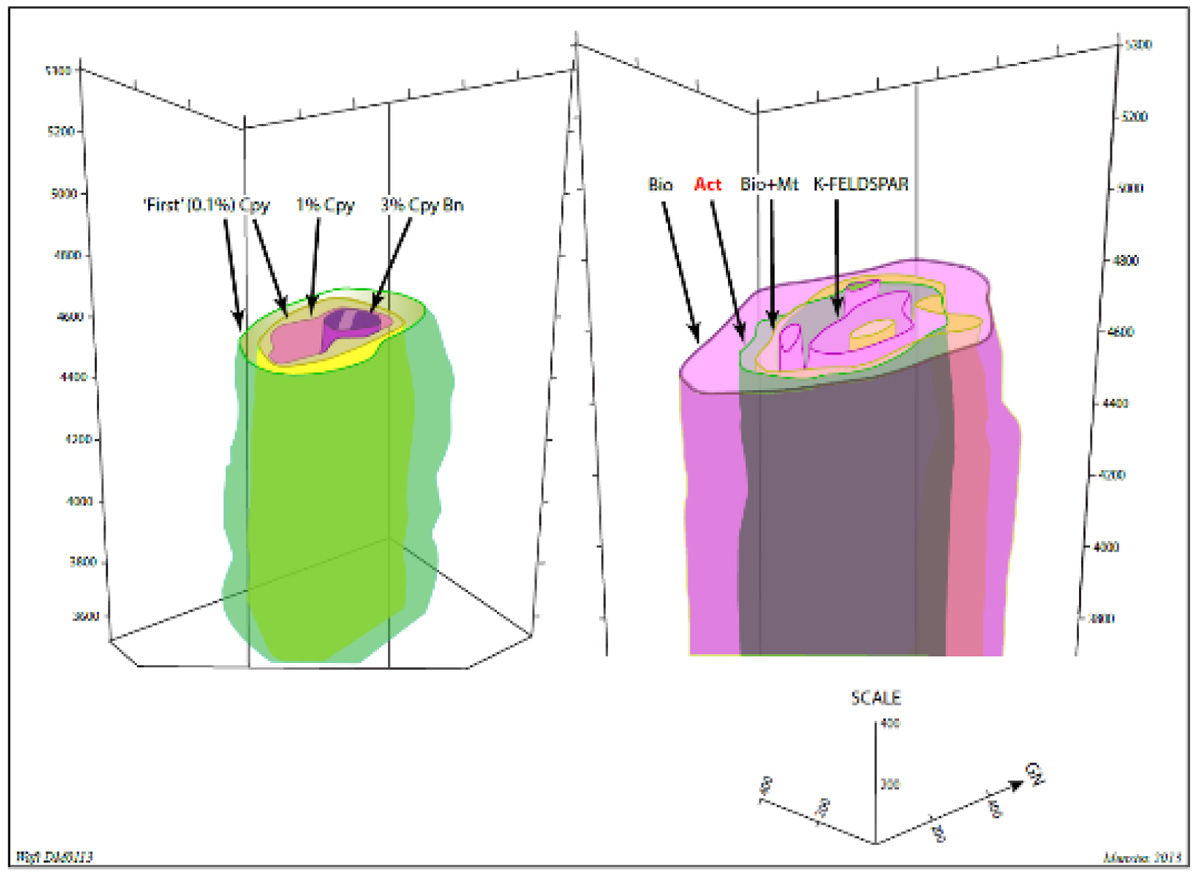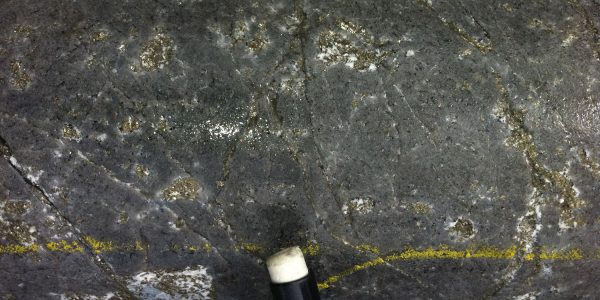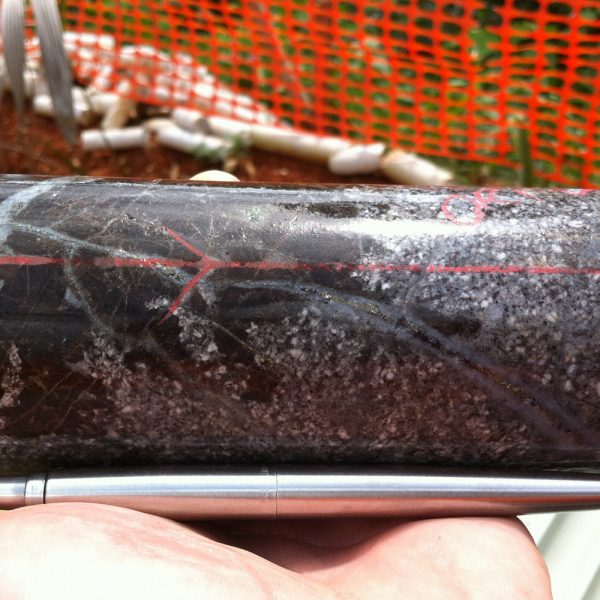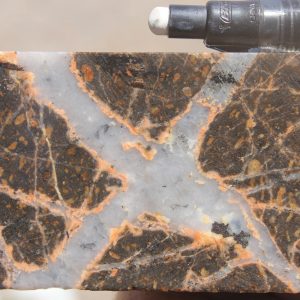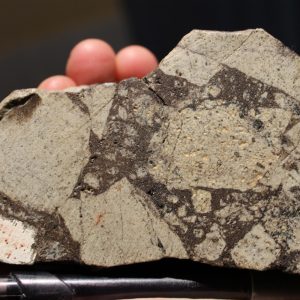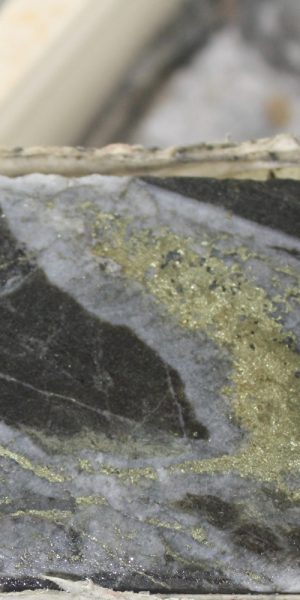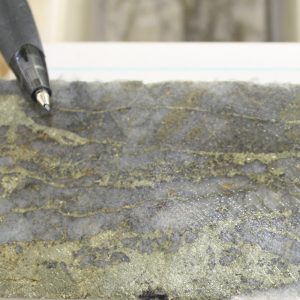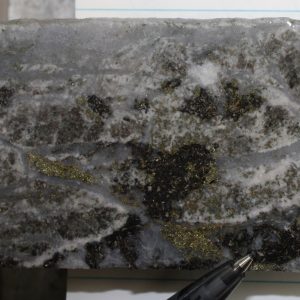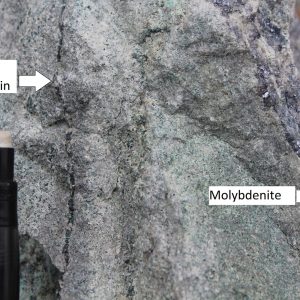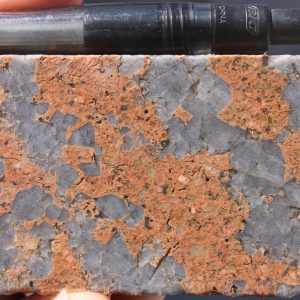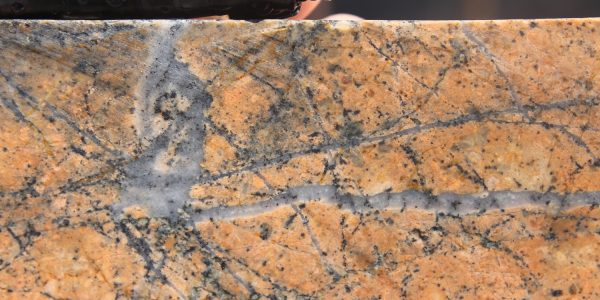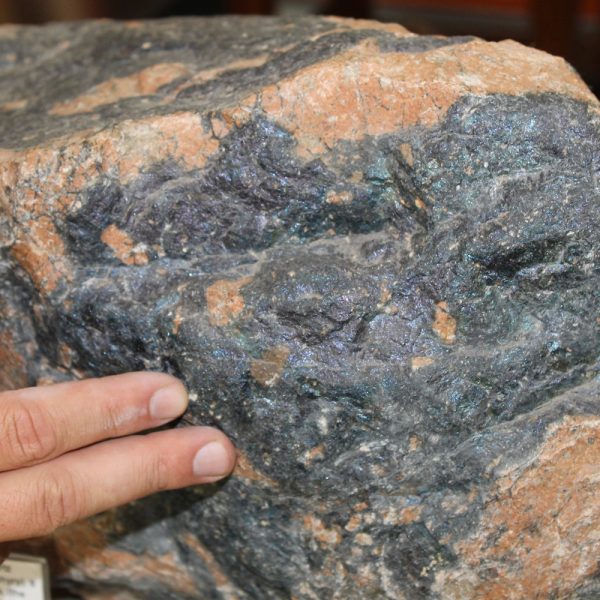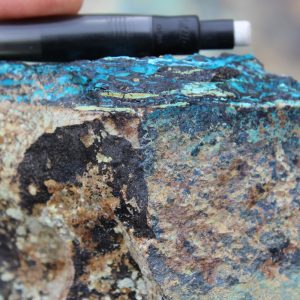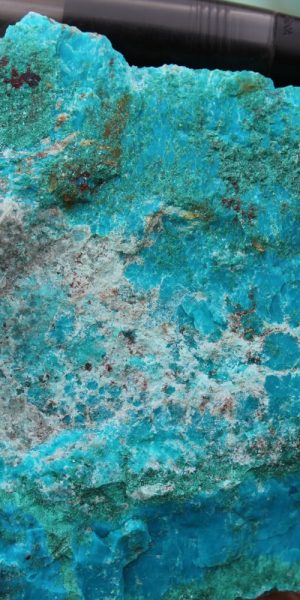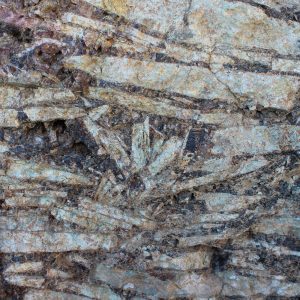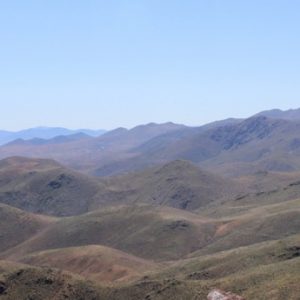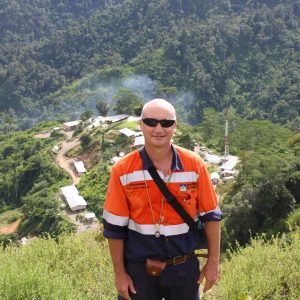Porphyry Cu-Ay ± Mo mineralisation typically occurs as Cu-Fe sulphides hosted within stockwork quartz veins or disseminations within, and immediately adjacent to, intermediate composition magmatic arc porphyritic intrusions, varying to Au-bearing in the SW Pacific rim, and also locally Mo-bearing. Recent geological models (Corbett, 2009, in prep; Sillitoe, 2010) suggest quality mineralisation occurs within polyphasal spine-like quartz veined porphyry intrusions overlying magmatic source rocks, although much of the Cu-Au may post-date quartz vein formation. Vectors to aid the identification of mineralisation may be provided by zoned prograde potassic-propylitic and later retrograde phyllic hydrothermal alteration along with marginal vein styles such as wall rock hosted sheeted B veins or quartz-sulphide veins which include D veins (in the classification of Gustafson and Hunt, 1975).
As explorationists vector from outside towards a porphyry environment, the identification of actinolite provides an important indicator of the higher temperature portion of inner propylitic (locally termed outer potassic) alteration, and the first occurrence of appreciable chalcopyrite mineralisation. This is documented marginal to other porphyry discoveries (Golpu, Wafi, Papua New Guinea; Menzies et al., 2013: Ridgeway, Australia; pers. observation; Wilson et al., 2003 and references therein). While some A and B style porphyry veins extend into the wall rock as vectors towards the source intrusion, wall rock hosted D veins (in the classification of Gustafson and Hunt, 1975) act as quality vectors towards buried porphyry intrusions. The later near porphyry veins lie within the class of low sulphidation deep epithermal quartz-sulphide Au + Cu style mineralisation (in the classification of Corbett and Leach, 1998) recognised marginal to many porphyry Cu-Au intrusions. Porphyry systems typically produce a unique, concentric metal zonation manifest in surface geochemistry which can be used as an additional vector towards the metal source. Similarly, prospecting for buried porphyry systems is aided by geophysical analysis of the complex relationships of magnetite introduction during prograde potassic alteration and magnetite destruction during retrograde phyllic alteration, the latter also hosting locally significant chargeable pyrite. Some recent porphyry Cu-Au discoveries such as Wafi-Golpu (Muller et al., 2010 and Menzies et al., 2013) Ridgeway, Australia (Holliday et al., 1999); Oyu Togoi, Mongolia (Crane and Kavalieris, 2012) feature substantial mineralisation within the overlying wall rocks. Exploration models which rely on zoned hydrothermal alteration and marginal vein styles can be used to prospect for blind intact porphyry systems as ideal exploration targets.
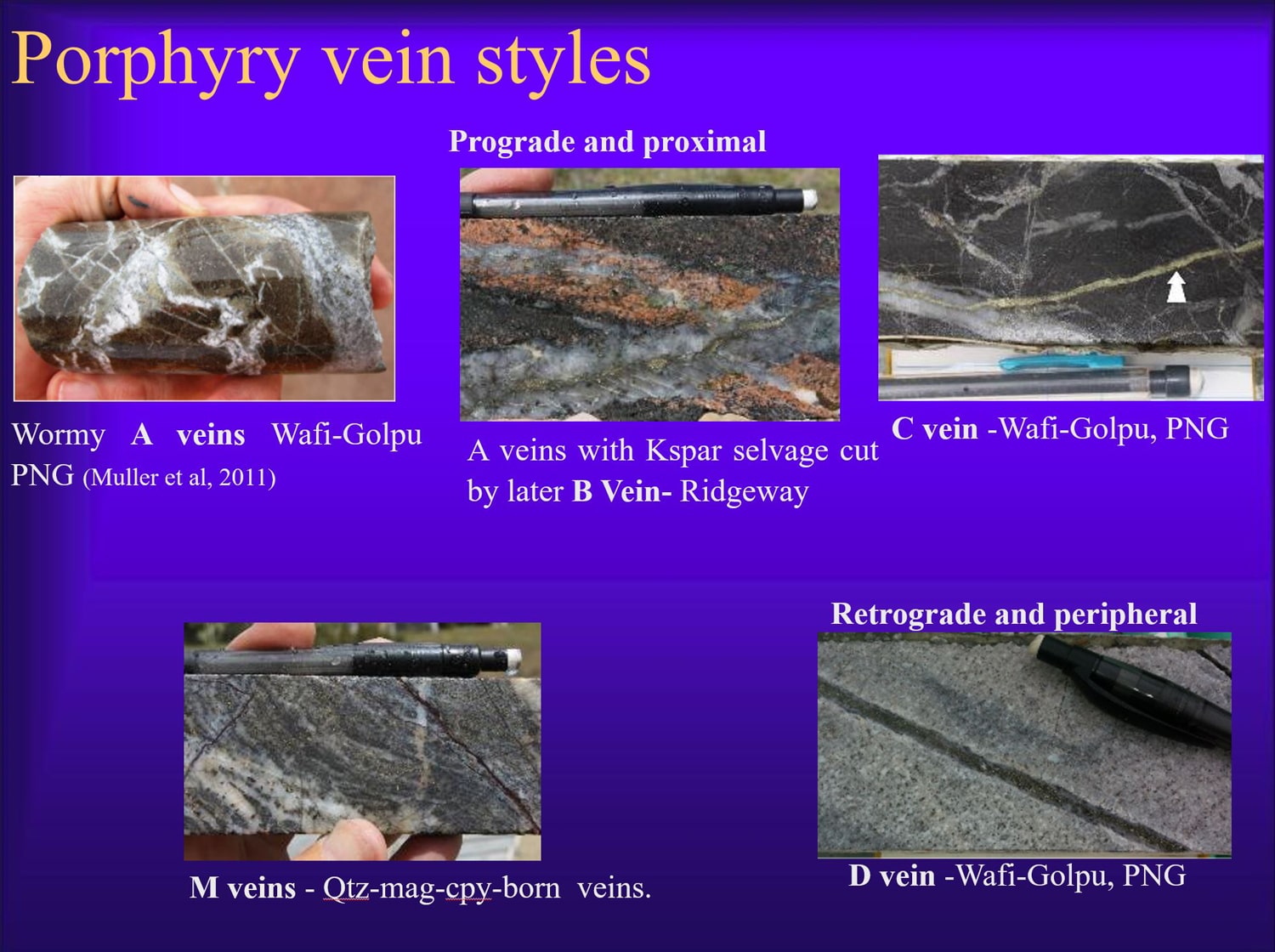
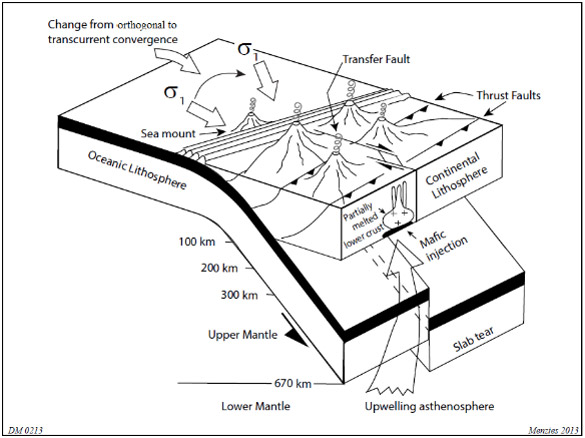
- Associated with subduction related magmatic arc.
- Emplaced during a change in convergence from orthogonal to transcurrent convergence
- Partial melting of lower crust emplaced in dilational transfer structures
- Slab tear facilitates upwelling of mafic magmas from asthenosphere to increasing Cu-Au endowment.
- High Cu-Au content is associated with bornite mineralisation
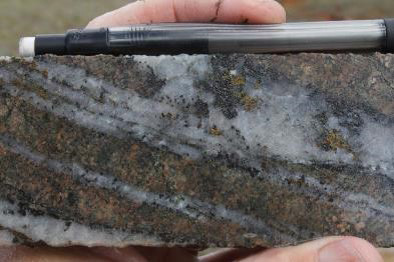
Ridgeway, NC498, 688m stock worked quartz-cpy-bornite veins 31.0g/t Au + 1.93% Cu within 84m from 821m at 7.40g/t Au and 1.27% Cu
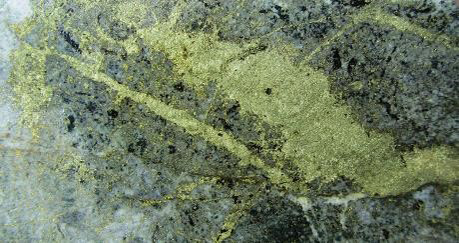
Wafi-Golpu WR377 - 883m @ 2.15% Cu and 2.23g/t Au
- Au:Mo Pearson correlation r = -0.024, n=32653 (negative correlation)
- Cu:Au Pearson correlation r = 0.607, n=32653 (positive correlation)
- Au:bornite Pearson correlation r = 0.21, n = 1890 (positive correlation)
- Cu:Mo Pearson correlation r = 0.031, n=32653 (neutral correlation)
Vectors for porphyry exploration
- Prograde alteration zonation and actinolite
- Porphyry veins styles including D veins
- Pebble dykes
- Metal zonation
- Mag highs prograde alteration, mag lows retrograde
- Chargeability anomalies
- Skarn mineralisation or float.
Golpu Alteration/mineralisation zonation
- Alteration shells of Kf - Bi+Mt - Act - Bi - Chl
- Sulphides shells of Bn - Cpy – Py
- First Cpy is coincident with first actinolite

